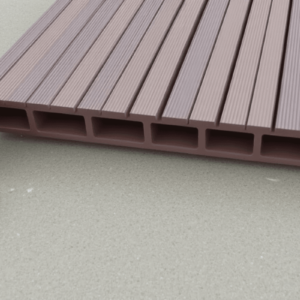Choosing the Right Non-Slip Composite Decking Tiles for Your Project
Understanding Non-Slip Composite Decking Tiles
Non-slip composite decking tiles are an excellent choice for homeowners looking to enhance their outdoor living spaces while ensuring safety and durability. These tiles are made from a combination of recycled materials and plastics, providing a sustainable option that is resistant to moisture, rot, and insect damage. When selecting non-slip composite decking tiles, it’s crucial to consider several factors to ensure you make the right choice for your project.
Material Composition
The material composition of non-slip composite decking tiles plays a significant role in their performance and longevity. Look for tiles that use high-quality recycled wood fibers and plastic resins. These materials not only reduce environmental impact but also offer superior strength and resilience against weather elements. Additionally, choosing tiles with UV-stabilized pigments can prevent fading and ensure that the tiles maintain their vibrant colors over time. For more information on the benefits of using recycled materials, refer to this EPA report on recycling.
Color Options and Texture
When it comes to aesthetics, non-slip composite decking tiles offer a wide range of color options and textures. From natural wood tones to contemporary hues, there is a tile that can complement any design scheme. The texture of the tiles is equally important; choose a pattern that not only looks good but also provides excellent traction. A slightly rough surface can significantly improve slip resistance, making these tiles ideal for high-traffic areas or around pools. Explore various color and texture combinations to find the perfect match for your project’s style and safety requirements.
Size and Installation Ease
The size of non-slip composite decking tiles should be determined based on the dimensions of your deck and the layout you envision. Standard sizes range from 12×12 inches to 24×24 inches, offering flexibility in design. Installing these tiles is generally straightforward, often requiring no more than a few tools like a rubber mallet and a utility knife. However, it’s essential to follow the manufacturer’s guidelines to ensure proper installation. If you’re new to DIY projects, consider hiring a professional to help with the installation process.
Tips for Matching Tiles with Existing Decor
To seamlessly integrate non-slip composite decking tiles into your existing decor, start by assessing the overall aesthetic of your space. Choose tiles that either blend in with your current flooring or create a striking contrast for a modern update. You can also use border tiles or contrasting colors to highlight specific areas or add visual interest. For instance, if you have a wooden deck, opt for tiles that mimic the appearance of wood but offer enhanced durability and slip resistance.
Creating a New Look
Non-slip composite decking tiles provide an opportunity to completely transform your outdoor area. Whether you want to refresh an old deck or create a new one, these tiles offer endless possibilities. Experiment with different patterns and layouts to achieve the desired effect. For example, a herringbone pattern can add sophistication, while a random layout can create a casual, relaxed vibe. Don’t hesitate to consult with a designer or visit showrooms to get inspiration for your project.
Conclusion
Selecting the right non-slip composite decking tiles involves careful consideration of material composition, color options, texture, size, and installation ease. By following the tips outlined above, you can ensure that your deck not only looks stunning but also remains safe and durable for years to come. Remember to prioritize quality materials and follow the manufacturer’s instructions for best results.





Reviews
There are no reviews yet.